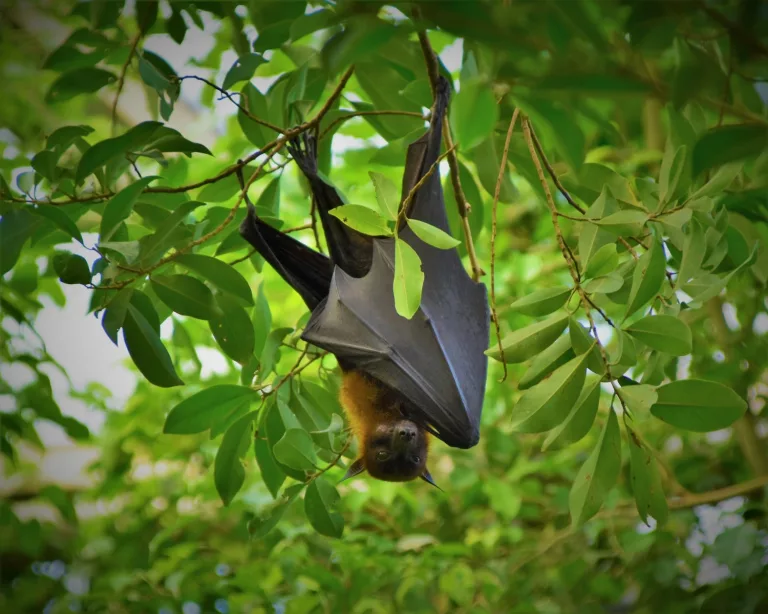Noise monitoring technologies have evolved in recent years from simple sound level meters to sophisticated systems that can differentiate between sounds, pinpoint their sources, and even find species based on their acoustic signatures. These systems use a combination of hardware and software to gather and analyze noise data, providing actionable insights to mitigate noise pollution.
The Symphony of Technologies Behind Noise Monitoring
Noise monitoring systems typically consist of sound level meters, microphones, data loggers, and analysis software. These components work in concert to capture, record, and make sense of the noise landscape.
- Sound Level Meters: These are the front-line soldiers, capturing noise in real-time. They’re equipped with microphones that measure sound pressure levels, providing a snapshot of the acoustic environment.
- Data Loggers: Think of these as the historians, storing the noise data over time. This historical data is invaluable for identifying trends and patterns in noise pollution.
- Analysis Software: Here’s where the magic happens. This software takes the raw data and transforms it into insights, helping identify noise sources, hotspots, and times of day when noise levels peak.
The Impact of Noise on Wildlife
Noise pollution has a profound impact on a wide range of animals across different habitats. Here are some key effects on various animal groups:
Terrestrial Mammals:
- Chronic noise exposure can lead to changes in foraging and anti-predator behavior, reproductive success, density, and community structure in terrestrial mammals like deer and rodents.
Birds:
- Anthropogenic noise can alter the frequency structure of bird songs, impacting their communication and potentially affecting their ability to find mates and establish territories.
Bats:
- Noise pollution can influence the activity levels of Brazilian free-tailed bats, with reduced activity and echolocation bursts observed near noisy gas sites[5].
Invertebrates:
- Urban noise can affect the health and reproductive success of invertebrates like crickets, which play crucial roles in food webs, pollination, pest control, and soil health.
Dolphins and whales:
- Underwater noise from human activities like boat traffic can disrupt the navigation, communication, and foraging abilities of dolphins and whales, potentially leading to harmful consequences for these marine mammals.
Amphibians, Fish, Reptiles, Molluscs:
- Noise pollution can impact the behavior and stress levels of amphibians like frogs, affecting their vocalizations and potentially influencing their welfare and success in wild release programs.
- The effects of noise on fish, reptiles, molluscs, and other aquatic species can vary based on factors like noise level, duration of exposure, proximity to noise sources, and behavioral state during exposure.
These examples illustrate how noise pollution can have diverse and significant effects on animals across different ecosystems, highlighting the need for conservation efforts to mitigate the impacts of anthropogenic noise on wildlife.
But there’s hope. With noise monitoring technologies, we can identify critical areas where noise pollution impacts wildlife and take measures to mitigate these effects. Whether it’s redesigning urban spaces to be more sound-friendly or implementing noise barriers in sensitive habitats, the data provided by noise monitoring is invaluable.
Noise Monitoring Technologies
Imagine you’re walking through a dense forest, your footsteps muffled by the thick carpet of leaves beneath you. You hear the distant call of a bird, the rustling of leaves, and the gentle flow of a nearby stream. Now, imagine if we could understand how all these sounds, including the noise we bring into these environments, affect the wildlife around us. That’s where noise monitoring technologies come into play. Let’s explore some of the cool gadgets and methods scientists use to listen in on nature and protect it from our noisy world.
Sound Level Meters (SLMs)
Think of a sound level meter as a superhero’s gadget that measures how loud or soft a sound is. Scientists use these handy devices outdoors to check the volume of noise pollution. By understanding which sounds are too loud, they can help make sure animals aren’t disturbed by our noise.
SLMs come in various models, from handheld devices to advanced integrated systems, offering different features and capabilities to suit different environmental monitoring needs. Regardless of the specific type, SLMs provide reliable and accurate noise measurements, enabling authorities, researchers, and stakeholders to make informed decisions and take appropriate actions to mitigate noise pollution and protect the environment.
While SLMs themselves do not directly monitor specific species, they are used to study environments inhabited by a wide range of animals affected by noise pollution. Some of the species and groups that benefit from noise level monitoring include:
- Birds: Many bird species are sensitive to noise pollution, which can affect their communication, breeding, and nesting behaviors. SLMs help identify areas where noise might be impacting bird populations.
- Marine Life: Noise pollution in marine environments, such as that from shipping and industrial activities, can affect marine mammals like whales and dolphins, which rely on sound for navigation and communication. SLMs are used to assess noise levels in these habitats.
- Amphibians: Frogs and other amphibians, which use vocalizations for mating calls, can be negatively impacted by excessive noise. Monitoring their habitats with SLMs helps understand how noise affects their breeding success.
- Terrestrial Mammals: Larger mammals, including primates and elephants, may also be affected by noise pollution. SLMs can help study its impact on their behavior and habitat use.
Automated Recording Units (ARUs)
Automated Recording Units are like nature’s own recording studio. Set up in forests, oceans, or anywhere in between, these devices record all the sounds in an area over time. This helps scientists figure out what kinds of sounds are normal for a place and which ones might be scaring or bothering the animals living there.
ARUs are versatile and can be used to monitor a wide range of species across different habitats:
- Birds: Many bird species are monitored using ARUs, as their vocalizations are distinct and can be used for identification. This includes songbirds, migratory birds, and even nocturnal species like owls.
- Amphibians: Frogs and toads are commonly monitored with ARUs, especially during their breeding seasons when males vocalize to attract mates. Their calls are indicators of population health and environmental changes.
- Mammals: Some mammals, including bats, primates, and marine mammals like whales and dolphins, are monitored using ARUs. Bats, for example, are studied for their echolocation calls, while marine mammals are monitored for their complex vocalizations.
- Insects: Certain insects, such as cicadas and crickets, produce distinctive sounds that can be captured by ARUs, providing data on species diversity and activity patterns.
Acoustic Tags
Imagine tagging along with a dolphin or a fish on its daily adventures. Acoustic tags make this possible in a way. These small devices attach to animals and record the sounds around them. This gives scientists a front-row seat to understand how noise affects these creatures in their natural habitats.
Acoustic tags are used across a wide range of species, particularly those in aquatic environments. Here are some of the key species monitored using this technology:
- Fish: Many fish species, including salmon, sturgeon, and sharks, are monitored using acoustic tags. These studies often focus on migration patterns, spawning behaviors, and habitat use.
- Marine Mammals: Dolphins, whales, and seals are tagged to study their migration, feeding habits, and how they are affected by noise pollution. This is especially important for understanding the impact of shipping lanes and offshore development on these species.
- Sea Turtles: Acoustic tags are used to track the movements and behavior of sea turtles, providing critical data for conservation efforts, especially regarding nesting sites and migration routes.
- Amphibians and Reptiles: In freshwater environments, acoustic tags have been used on species like crocodiles and certain large fish species to study their spatial ecology and habitat preferences.
Passive Acoustic Monitoring (PAM) Systems
PAM systems are the big ears under the sea. They listen to the sounds in the ocean, from the singing of whales to the rumble of ships. By keeping an ear out for these underwater concerts, scientists can figure out how human-made noises impact marine life.
PAM systems are versatile and can monitor a wide range of species, particularly those that are vocal or produce distinctive sounds. Some of the key species groups monitored include:
- Marine Mammals: Whales, dolphins, and seals are extensively monitored using PAM systems. These species are often vocal and use sound for communication, navigation, and feeding, making them ideal candidates for acoustic monitoring.
- Fish: Certain species of fish, such as cod and haddock, produce sounds, especially during spawning seasons. PAM systems help in studying these vocalizations and understanding spawning behaviors and locations.
- Birds: In terrestrial environments, PAM systems are used to monitor bird populations, especially in dense forests or remote areas. The calls and songs of birds can indicate species diversity and changes in bird populations.
- Amphibians: Frogs and other amphibians are also monitored with PAM systems, particularly for studying breeding patterns and population health in wetland habitats.
- Insects: Some studies use PAM systems to monitor the sounds of insects, such as bees or cicadas, which can be indicators of ecosystem health and biodiversity.
Bioacoustics Monitoring Systems
Bioacoustics systems are like detectives for animal sounds. They don’t just record noises; they analyze them to pick out specific animal calls. This technology helps scientists study how animals communicate and whether noise pollution is messing with their conversations.
Bioacoustics monitoring systems are versatile and can be used to study a wide range of species across different ecosystems. Some of the key groups include:
- Birds: Many bird species are known for their distinctive calls and songs, making them ideal candidates for bioacoustics monitoring. This technology is used to track bird populations, migration patterns, and the effects of habitat loss or climate change.
- Amphibians: Frogs and other amphibians have unique vocalizations used for mating and territory claims, which can be monitored to assess population health and the impact of environmental changes on breeding activities.
- Marine Mammals: Whales, dolphins, and seals use complex vocalizations for communication and navigation. Bioacoustics monitoring in marine environments helps study these species’ behavior, population dynamics, and responses to underwater noise pollution.
- Insects: Certain insects, such as bees and cicadas, produce sounds that can be monitored to study their behavior, population trends, and responses to environmental changes.
- Mammals: Some terrestrial mammals, including elephants and primates, communicate using vocalizations that can be recorded and analyzed to understand their social structures, behaviors, and habitat use.
Distributed Acoustic Sensing (DAS)
Distributed Acoustic Sensing is a bit like having a super long ear that can hear vibrations through the ground or water. By using fiber optic cables, this technology can listen over large areas, helping scientists understand how sounds travel and affect wildlife across different environments.
While DAS technology is relatively new and its full potential for biodiversity monitoring is still being explored, it has shown promise for monitoring a variety of species, including:
- Marine Mammals: Whales, dolphins, and other marine mammals can be monitored using DAS systems, especially for studying their vocalizations and movements in the ocean.
- Terrestrial Wildlife: Larger animals that create ground vibrations, such as elephants or large carnivores moving through a forest, can potentially be monitored with DAS systems, providing data on their movement patterns and habitat use.
- Fish: In aquatic environments, DAS systems can detect the presence of large fish or schools of fish, contributing to studies on migration patterns, spawning behavior, and the impact of environmental changes on aquatic life.
- Subsurface Organisms: While not directly monitoring individual species, DAS’s ability to detect subsurface movements can indirectly benefit studies on species that affect or are affected by soil and subsurface conditions, such as burrowing animals.
Soundscapes and Ecoacoustic Metrics
This approach is like creating a whole picture of an area’s sound environment. By recording all the sounds in a place, scientists can use special tools to analyze the health of an ecosystem and how it changes with different levels of noise pollution.
The beauty of soundscapes and ecoacoustic metrics is their ability to monitor a wide range of species simultaneously, making them suitable for studying diverse ecosystems. Some of the species and groups monitored include:
- Birds: Birds are among the most studied groups using soundscapes due to their diverse and often species-specific vocalizations. Researchers can monitor bird presence, diversity, and behavior across different habitats.
- Amphibians: Frogs and other amphibians are also commonly monitored through soundscapes, especially in wetland ecosystems, where their vocalizations are a key component of the soundscape.
- Insects: The sounds of insects, such as crickets and cicadas, contribute significantly to many ecosystems’ soundscapes, allowing for the monitoring of insect diversity and activity patterns.
- Marine Life: In aquatic environments, soundscapes can capture the vocalizations of marine mammals, fish, and even the movements of large schools of fish, providing data on marine biodiversity and the impact of underwater noise pollution.
- Mammals: Larger mammals may not always be the primary focus of soundscape studies due to their less frequent vocalizations, but their presence can still be detected indirectly through the impact on the soundscape or through specific vocalizations captured in the recordings.
Ultrasound Detectors
Some animals chat in frequencies higher than we can hear. Ultrasound detectors capture these high-pitched conversations, allowing scientists to study creatures like bats and insects and how noise might interfere with their chatter.
Ultrasound detectors are primarily used to study species that communicate or navigate using ultrasonic frequencies. Some of the key groups include:
- Bats: Bats are among the most studied groups using ultrasound detectors. They emit ultrasonic calls for echolocation, navigating through the night sky and locating prey. Monitoring these calls provides insights into bat species diversity, distribution, and behavior.
- Insects: Certain insects, such as some species of beetles and moths, produce ultrasonic sounds. These sounds can be for communication among conspecifics or as a defense mechanism against predators like bats.
- Rodents: Some rodents, including mice and rats, use ultrasonic vocalizations in social interactions. Researchers study these sounds to understand rodent behavior and social structures.
- Marine Mammals: Although not as commonly monitored with ultrasound detectors as bats, some marine mammals, like dolphins and porpoises, use ultrasonic sounds for echolocation underwater. Specialized underwater ultrasound detectors (hydrophones) are used for these studies.
Vibration Sensors
Not all communication among animals is through the air; some talk through vibrations. Vibration sensors help scientists understand how creatures like burrowing animals feel about the rumbles and shakes we might cause in their underground homes.
Vibration sensors are particularly useful for studying species that rely on substrate-borne vibrations for communication or those whose movements create detectable vibrations. Some of the key groups include:
- Invertebrates: Many invertebrates, such as spiders and insects (e.g., beetles, cicadas), communicate through vibrations in the substrate or plants. Vibration sensors can capture these signals, providing insights into their behavior and interactions.
- Small Mammals: Rodents and other small mammals that burrow or move through dense underbrush can be monitored with vibration sensors, helping researchers track their movements and estimate population sizes.
- Large Mammals: The movements of larger mammals, such as elephants, which communicate using low-frequency vibrations that travel through the ground, can also be detected with vibration sensors.
- Reptiles and Amphibians: Certain species of reptiles and amphibians that produce vibrations during movement or communication can be studied using this technology, although their detection might be more challenging compared to invertebrates and mammals.
Smartphone Apps and Citizen Science Platforms
Last but not least, there’s a role for everyone in monitoring noise pollution. With smartphone apps, anyone can become a citizen scientist, recording and sharing sounds from their local environment. This helps build a bigger picture of how noise affects wildlife all around the world.
By using these technologies, scientists are learning more every day about the delicate balance of sounds in nature. And with this knowledge, we can all play a part in keeping our planet a peaceful home for all its inhabitants.
Embracing the Future: Innovations in Noise Monitoring
The future of noise monitoring is bright, with emerging technologies like AI and IoT revolutionizing how we approach noise pollution. AI algorithms can now predict noise levels based on various factors, while IoT devices allow for real-time, widespread noise monitoring across cities and natural landscapes.
Conclusion
By understanding the technologies behind noise monitoring and their impact on our world, we can all play a part in tuning into a quieter, more harmonious future. So, the next time you hear the cacophony of the world outside, remember that science and technology are working in concert to turn down the volume, one decibel at a time.
And who knows? Maybe you’ll be inspired to join the chorus of those advocating for a quieter world. Whether through supporting noise monitoring initiatives or simply being more mindful of the noise we create, we all have a part to play. Let’s make some noise about keeping things quiet, shall we?

For those interested in exploring more about how technology intersects with environmental conservation, check out our articles on Acoustic Environmental Monitoring Technologies and Artificial Intelligence for Environmental Monitoring. Together, we can create a quieter, more sustainable world for generations to come.
Next Steps
Round Table Environmental Informatics (RTEI) is a consulting firm that helps our clients to leverage digital technologies for environmental analytics. We offer free consultations to discuss how we at RTEI can help you.


